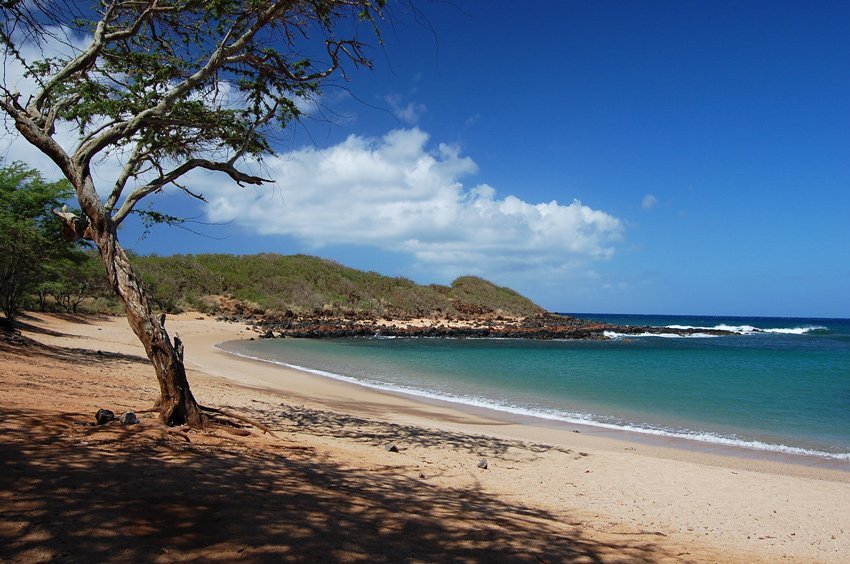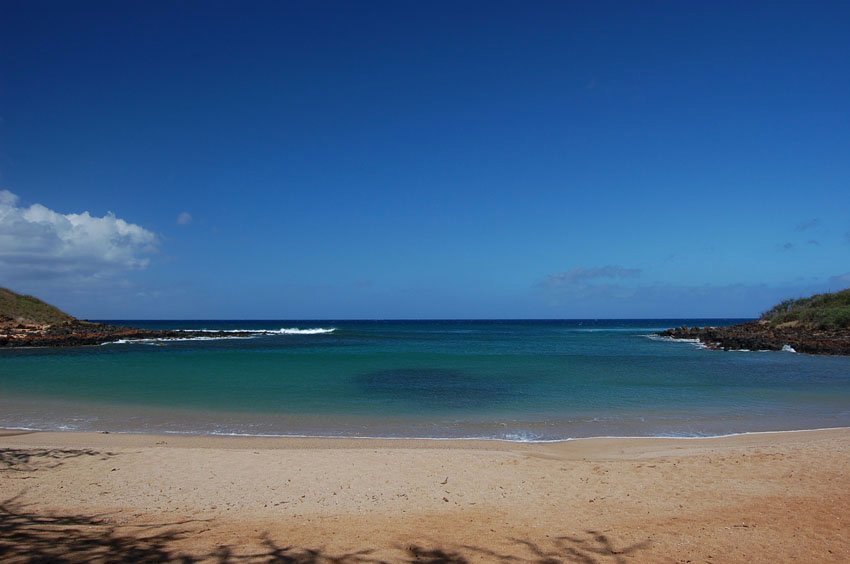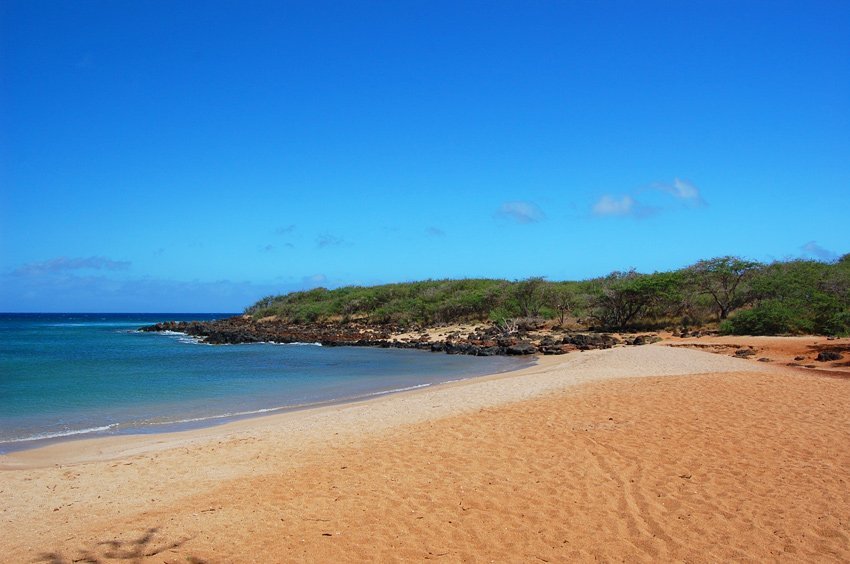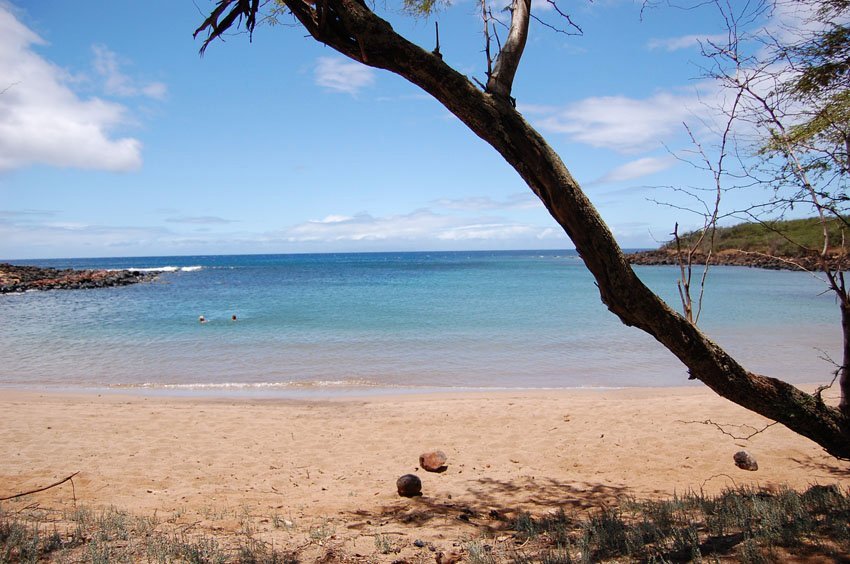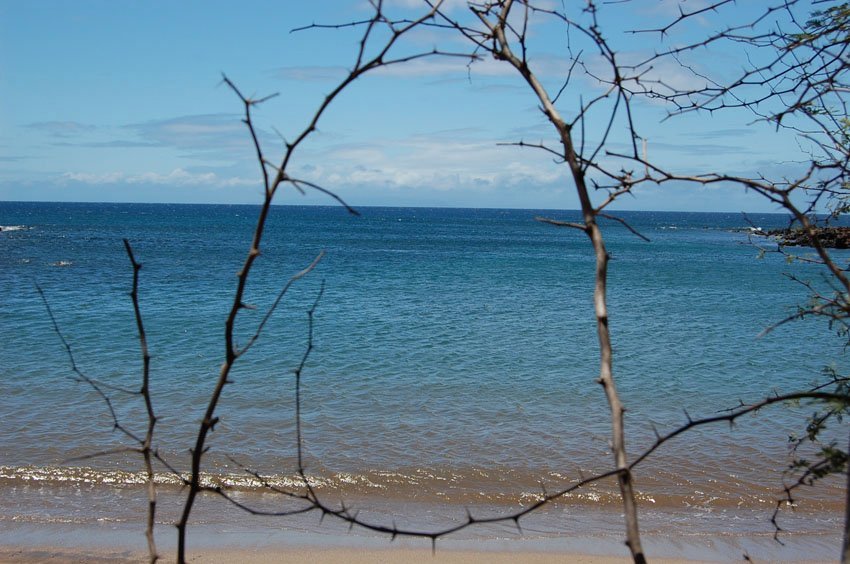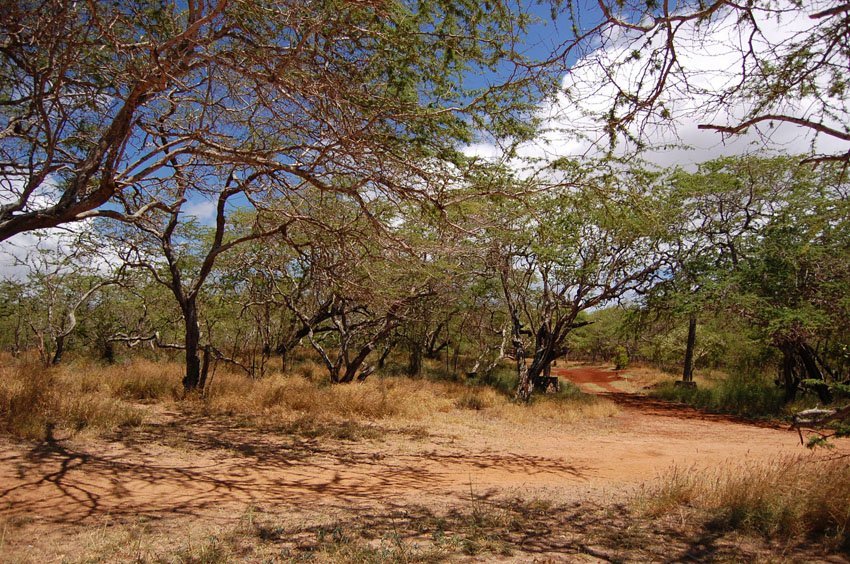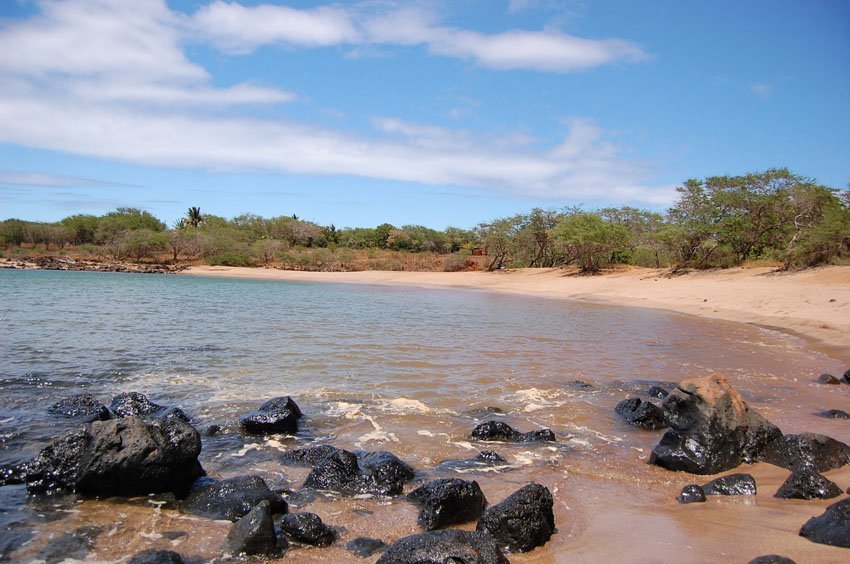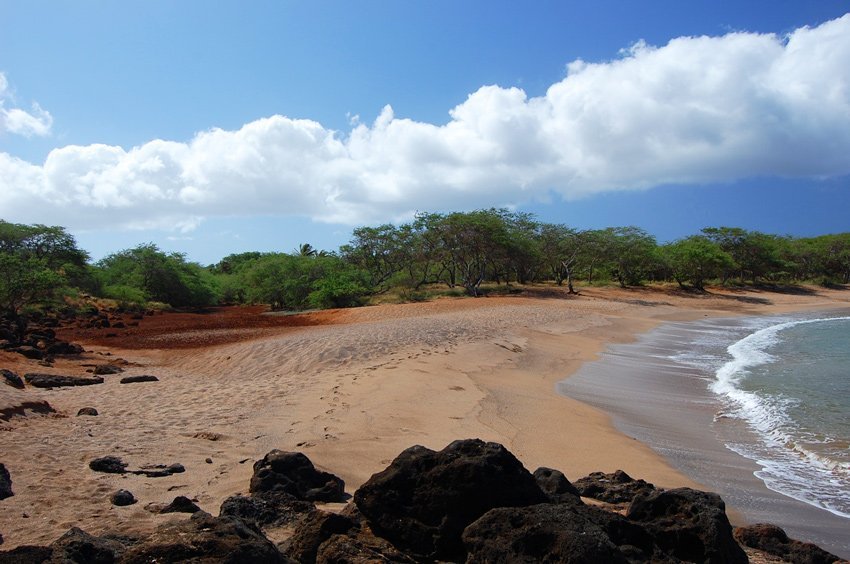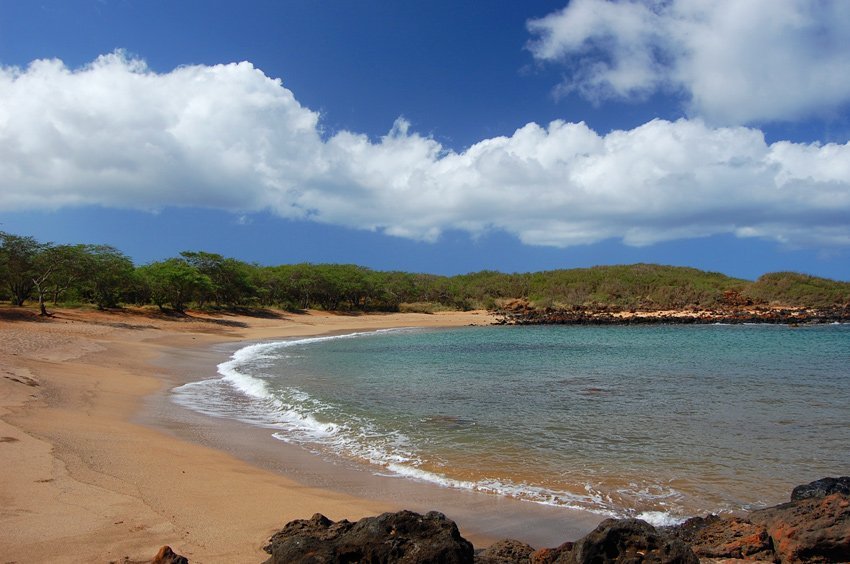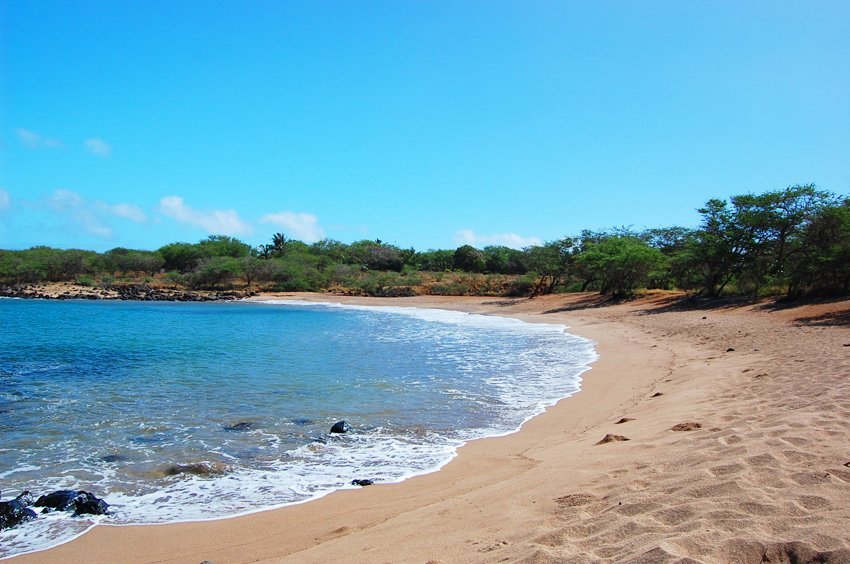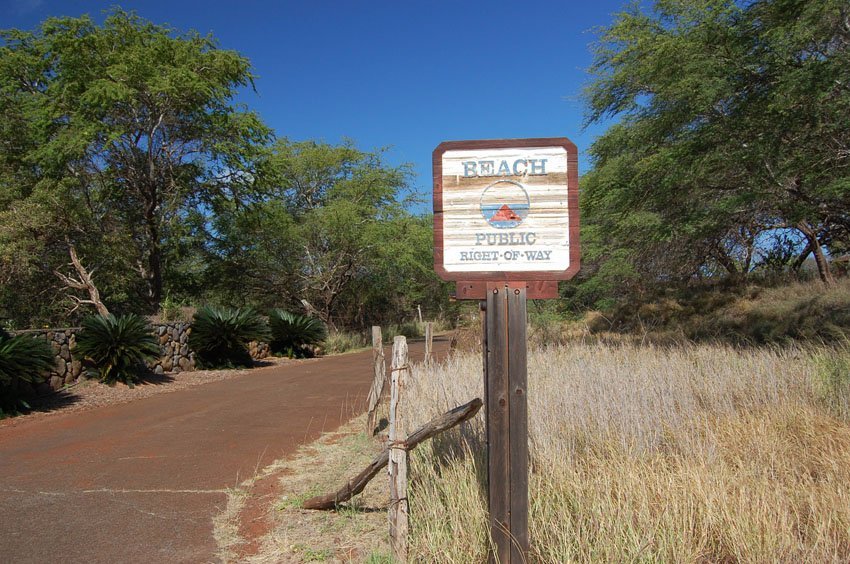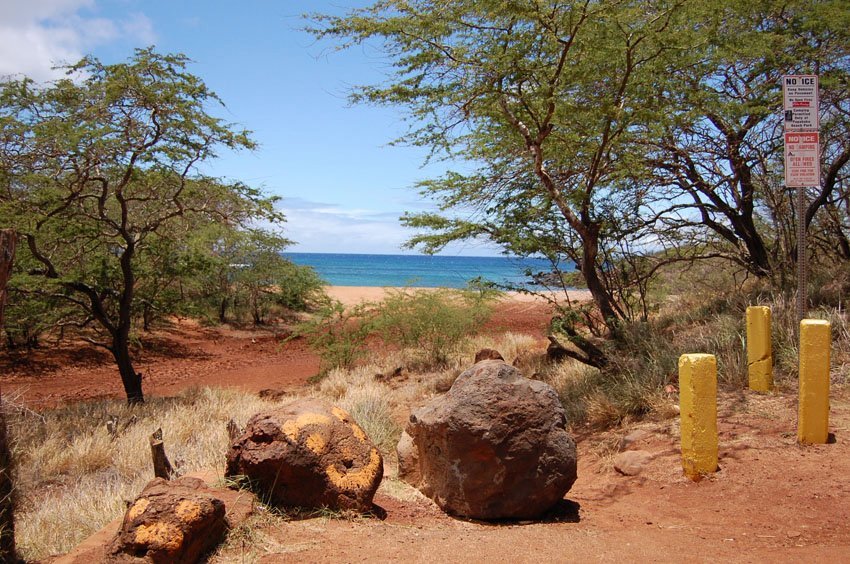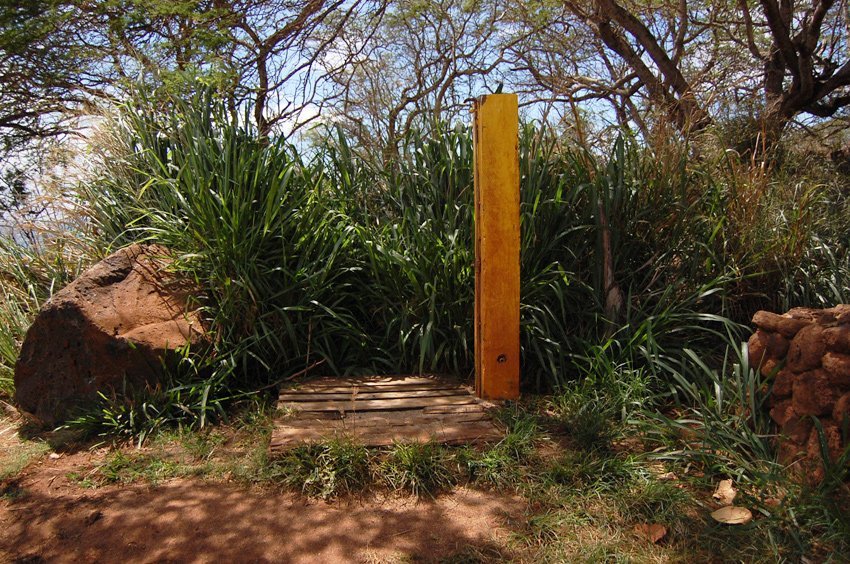Dixie Maru Cove (Kapukahehu Beach)
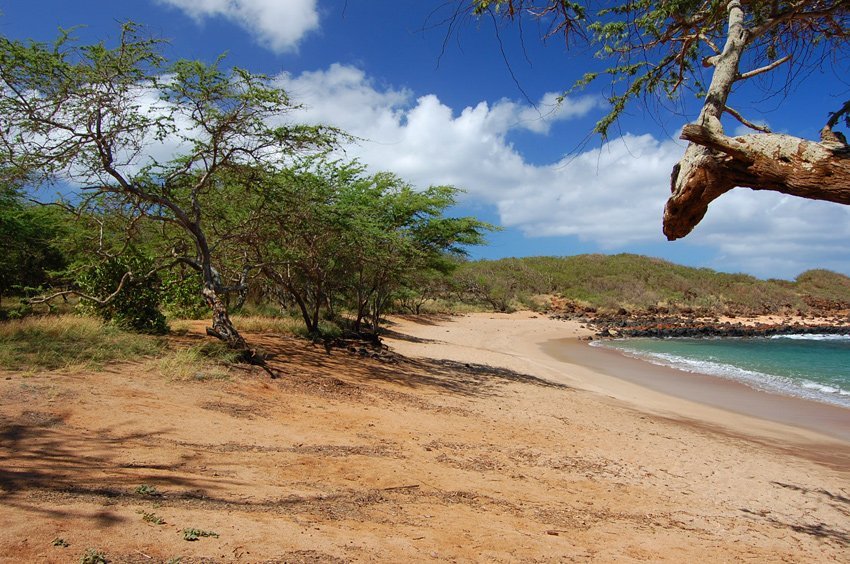
Dixie Maru Cove, also known as Kapukahehu Beach, is a small crescent-shaped bay on Molokai's west coast. Sheltered by lava outcroppings and a protective reef, it's one of the safest beaches on the island for swimming and snorkeling during the summer months. Named after a Japanese fishing boat wrecked offshore in the 1920s, this remote sandy beach offers calm waters, scenic views, and occasional solitude. Be cautious of sharp kiawe thorns and discarded fishing gear along the shoreline.
Dixie Maru Cove, Molokai
Located on Molokai's west shore, Dixie Maru Cove (view panorama) × has one of the best swimming beaches on the island. The protected sandy cove features lava outcroppings on each side and is a nice place to enjoy the water, whether it's for a relaxing swim or snorkeling. Fringed by a reef, the beach usually has calm waters during the summer. This is when the swimming and snorkeling conditions are the best. Even though the bay is more protected than the other beaches in this area (such as nearby Papohaku Beach), stay out of the water if the surf is up. There are no lifeguards here.
Dixie Maru Cove got its name "Dixie Maru" from a Japanese fishing boat name plate. In Japanese culture, "maru" is a suffix added by sailors to their ship names as this term connotes something that is beloved. The term "maru" in itself represents a sense of perfection. It was in the 1920s when the Japanese sailboat Dixie Maru was wrecked off the shore and its name plate was then hung near the beach's gate. From then on, the remote beach has been fondly called Dixi Maru Cove. Its Hawaiian name is Kapukahehu Beach.
Dixie Maru Cove takes some time to get to as it is located on Molokai's remote west shore. However, the road that leads here is paved. On most days the beach is only sparsely visited. The beach is backed by thorny kiawe trees, so be careful when looking for a shady spot under one of the trees.
Editor's note: Last time we visited Dixie Maru Beach one of us stepped into a big fish metal fishhook, luckily wearing running shoes. It was really difficult to remove the hook from the shoe. So it is a good idea to wear shoes here to protect your feet from any discarded fishhooks, as well as the thorns from the kiawe trees that are plentiful on most beaches in this area.
Key Features of Dixie Maru Cove
- Safe swimming conditions: Fringed by a reef and lava outcroppings that create a calm cove, especially in summer.
- Snorkeling friendly: Clear waters and sandy bottom near shore make it one of Molokai's best snorkel spots.
- Historic name origin: Named after the wrecked Japanese boat "Dixie Maru" from the 1920s.
- Remote and quiet: Located at the end of a paved road on Molokai's west side, with limited visitors.
- Kiawe trees and hazards: Beware of thorny trees and fishhooks along the beach trail.



Frequently Asked Questions
Is Dixie Maru Cove good for swimming?
Yes, it's one of the best swimming beaches on Molokai during calm summer conditions due to the protective reef and sheltered bay.
Can I snorkel at Dixie Maru?
Yes, snorkeling is excellent when the ocean is calm. The middle section of the cove has a sandy bottom and is usually clear.
How do I get to Dixie Maru Cove?
Follow Pohakuloa Rd to the end, then turn right onto a small paved road leading to the beach parking area.
Are there any hazards on the beach?
Yes, kiawe tree thorns and occasional discarded fishhooks can be found, so it's best to wear protective footwear.
Are there any facilities?
There is a shower and parking area, but no lifeguards or restrooms.
















